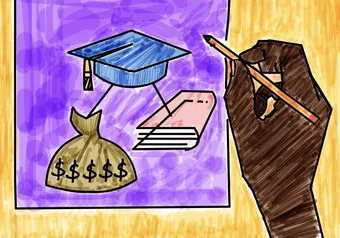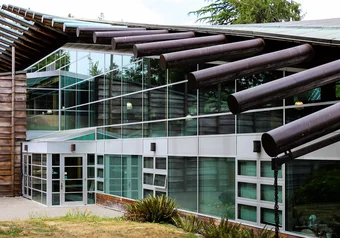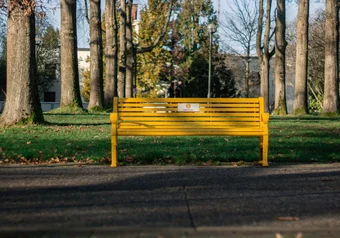On February 14, hundreds of people marched, drummed and chanted as part of the 27th Annual Women’s Memorial March to honour the lives of missing and murdered women in the Downtown Eastside (DTES).
First organized in 1992 “in response to the murder of a Coast Salish woman,” the march continued to be a form of public grieving and healing for those who are affected by the violence in the DTES. For instance, an integral part of the march was the stop at certain locations for the elders to perform ceremonies for the women who were last seen or found there. Many attendees also came with family or brought signs about their loved ones.
“I started walking in this march with my mother as a teenager in the mid-1990s,” said Rebecca Brass, one of the organizers. “I now walk with my daughter. We march because we lost our aunt in a violent way, and we march to remember over 1,200 of our sisters who are murdered or missing.”
The march also put the issue of disproportional violence against Indigenous women at its forefront by having them lead the event, centering their voices. Organizers and community activists used this platform to speak about their heritage and the effects that the policies of past and present Canadian governments have had on their community.
“I’m the first generation to not attend residential school,” said Brass. “[Their] racist policies and misogynistic practices were made to destroy our culture and to exclude us socially and economically. [They] have contributed to an outrageous number of Indigenous women living in poverty, or in homelessness, or with addiction, and it’s time that [they] are reexamined to better reflect the day and age that we are living in today.”
The role of stereotypes in perpetuating this racial violence was also emphasized.
“The system has built labels around our women so thick that you only see us through them,” said Carol Martin, one of the organizers. “We want to be represented as human beings and as mothers, grandmothers, daughters, aunts. The same about our men too. Try to look at us with different eyes and treat us with respect because that’s all we’re asking in order to make change.”
Ultimately, they talked about the need for the government to value Indigenous women’s inputs in order to arrive at concrete results.
“Why isn’t anything changing after 26 years?” said Martin. “It’s not really about the money. It’s about measuring how the money is working for us, [but] how do you find out whether this is working for us? Where are the voices of our women? No one comes down here and asks us about what we need. We are ignored.”
The role of UBC
Despite the DTES’s distance from campus, UBC students, faculty and staff could still be found within the crowd. However, due to the high number of international and out-of-province students at UBC, “a lot of our students are yet aware of this issue,” said Dr. Litsa Chatzivasileiou, professor of gender, race, sexuality and social justice.
In response, there remain many ways for UBC to help.
Chantel Luu, a fourth-year sociology student, recommended spreading information about the issue and the march to all faculties. She encouraged everyone to not be afraid of attending the future marches, but instead to go “as an observer without any assumptions or expectations.”
“We can also have things like on the day of the march, students are allowed to miss classes without being penalized,” said Chatzivasileiou. “Likewise, we can have lectures that talk about this issue, and connect the idea of settler-colonialism and the phenomenon of missing and murdered women. UBC is on stolen lands, but what does this mean in terms of the displacement of aboriginal people as they are literally being disappeared in Vancouver?”
This idea of raising awareness about the issue through public forums was also highlighted by Evelyn Youngchief, another organizer. She further stressed the need to include the voices of the women from the DTES community and from the memorial committee in these events in order to reflect the humanity of the missing and murdered women.
In the end, these events and discussions are ultimately about keeping those who are not affected from forgetting about the missing and murdered women of the DTES. Women who have historically been forgotten by other institutions.
“Everyone shows up on February 14 — and then it remains an afterthought until next year,” said Myrna Cranmer, another organizer. “I will say this again and again — our women are being ignored to death.”
Share this article
First online



![['']](https://storage.googleapis.com/ubyssey/media/renditions/dtes_womens_march_indigenous_fir.width-1000.format-webp.webp)
![['']](https://storage.googleapis.com/ubyssey/media/renditions/IMG_20170214_121653945_HDR.width-1000.format-webp.webp)
![['']](https://storage.googleapis.com/ubyssey/media/renditions/dtes_womens_march_indigenous_fir.width-1000.format-webp_1JjzOoc.webp)


